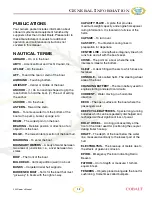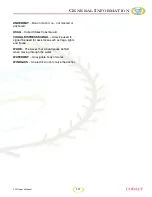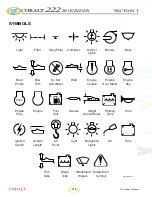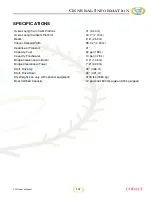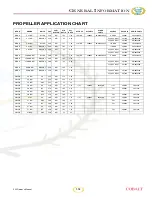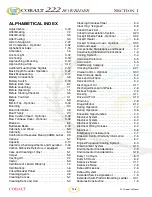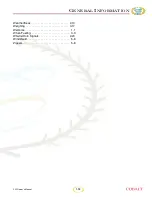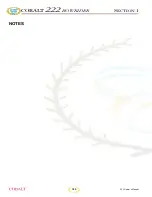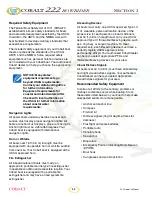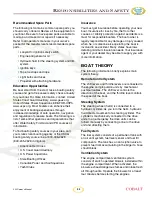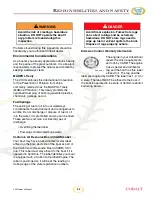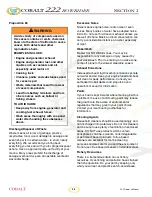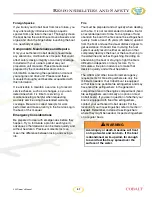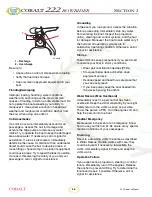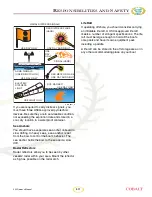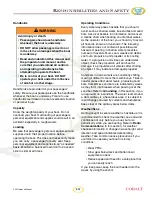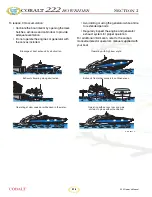
Cobalt_OM_preprint_shell.fm Page 1 Wednesday, March 1, 2006 5:39 AM
222 Owner’s Manual
2
-
3
R
ESPONSIBILITIES
AND
S
AFETY
Recommended Spare Parts
The following list contains common spare parts you
should carry onboard. Review all the equipment on
your boat. Be sure to have spare parts available to
maintain and make minor repairs if necessary.
Refer to all operator’s manuals in your owner’s
packet for the manufacturer’s recommended spare
parts.
• Lanyard for ignition safety switch
• Engine and generator oil
• Hydraulic fluid for the steering system and trim
system
• Ignition keys
• Tape, tie straps and rope
• Light bulbs and fuses
• Propeller with attaching hardware
Education Opportunities
Be boat smart from the start, take a boating safety
course and get a free vessel safety check annually
for your boat. For more information, contact: United
States Coast Guard Auxiliary, www.cgaux.org;
United States Power Squadrons, 888-FOR-USPS,
www.usps.org. Most boaters can enhance their
enjoyment of boating experiences through
increased knowledge of safe operation, navigation
and regulation of pleasure boats. The following is a
list of some other agencies and organizations that
offer Water Safety, First Aid and CPR courses or
information.
To find boating safety courses in your area, call
your state’s local boating agency or the USCG
boating safety course line at 800-336-2628
(800-245-2628 in Virginia).
• American Red Cross
• U.S. Coast Guard Auxiliary
• U.S. Power Squadrons
• State Boating Offices
• Canadian Power and Sail Squadrons
• Yacht Clubs
Insurance
You must get insurance before operating your new
boat. Insurance for loss by fire, theft or other
causes, or liability protection against accidents is a
must for responsible boaters. The boat owner is
legally responsible for any damage or injury caused
when he, or someone else operating the boat is
involved in an accident. Many states have laws
detailing minimum insurance needs. Your insurance
agent or your dealer may be able to supply you with
more information.
BOAT THEORY
The following information briefly explains main
system theory.
Remote Control System
The shift levers and throttle levers are connected to
the engine and propulsion units by mechanical
push/pull cables. The shift lever controls the
direction of the boat, and the throttle lever controls
the speed of the boat.
Steering System
The steering wheel (helm) is connected to a
hydraulic cylinder. As you turn the helm, hydraulic
fluid directs movement of a steering cylinder. The
cylinder is mechanically connected to the drive
units. In an emergency the drive units can be
turned manually by connecting a line to the drive
unit and directing them.
Fuel System
The fuel system consists of a permanent tank with
an air vent system, fuel level sensor and fuel fill
components. The tank has an anti-siphon valve to
prevent fuel from accumulating in the bilge if a hose
should break.
Ventilation System
The engine compartment ventilation system
consists of switch operated blowers installed within
the engine compartment. When activated, the
blowers exhaust dangerous fumes and intake fresh
air through vents. Operate the blowers for at least
four minutes before starting the engines.

